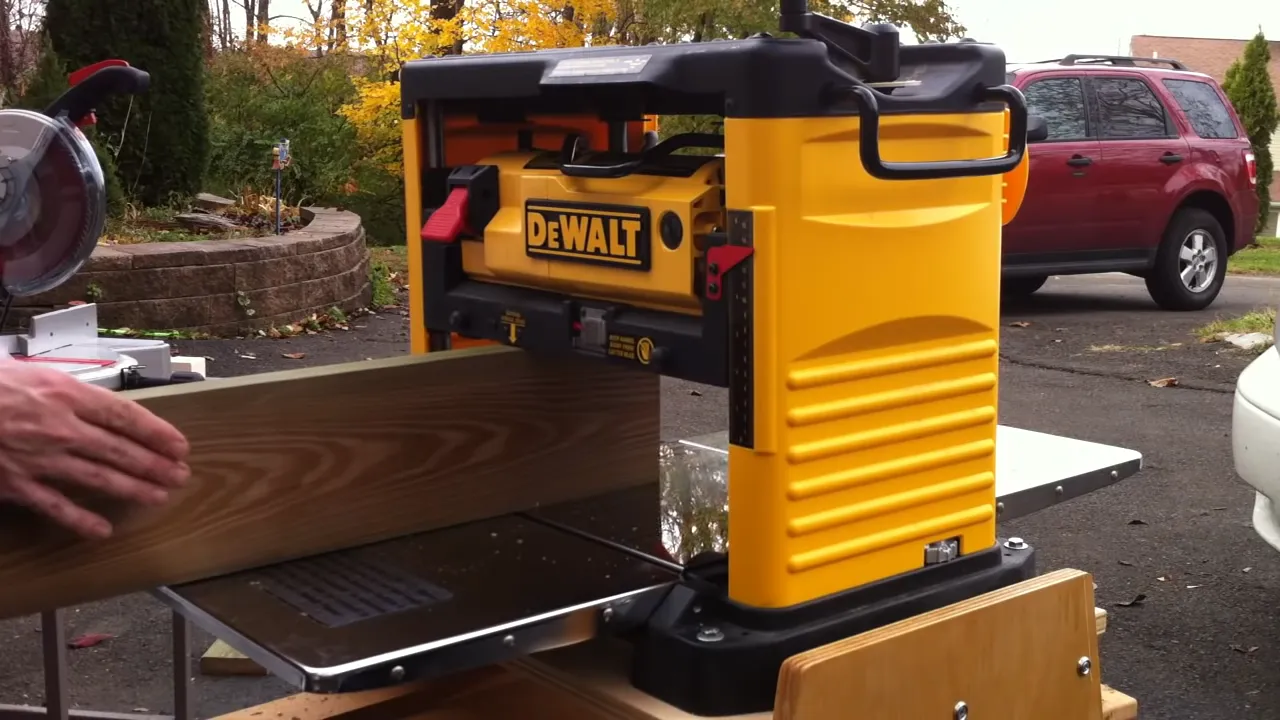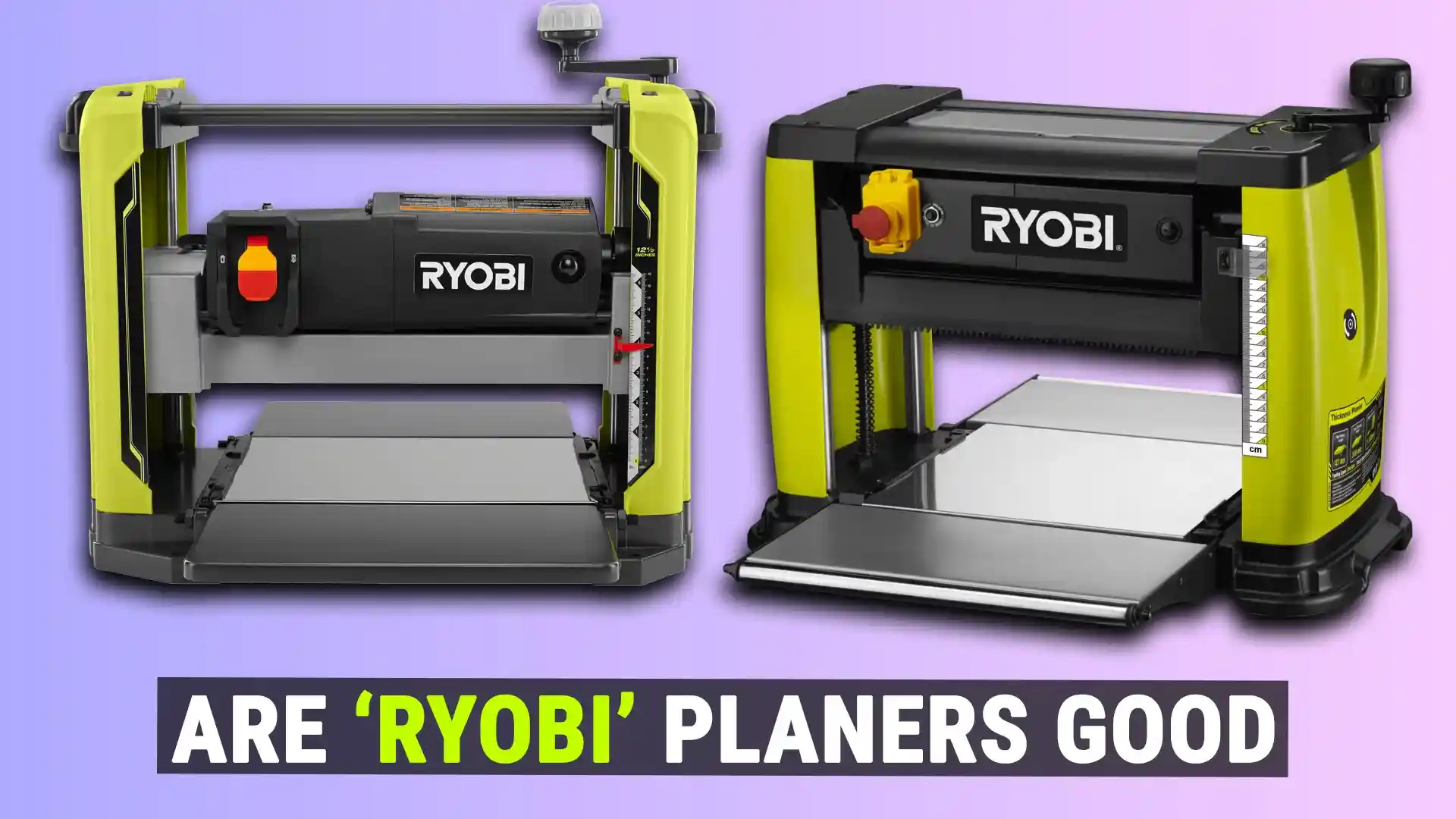What Size Planer Do I Need? [Easy Guide!]
The planer size you need depends on your typical board widths and thickness, but a good general range is a benchtop 12-15” planer for small projects and hobbyists, or a 15-20” floor standing planer for furniture building and larger stock removal jobs.
Prioritize wider planing capacity over power for versatility.
This comprehensive guide will walk you through the key considerations for choosing the right planer size for your needs.
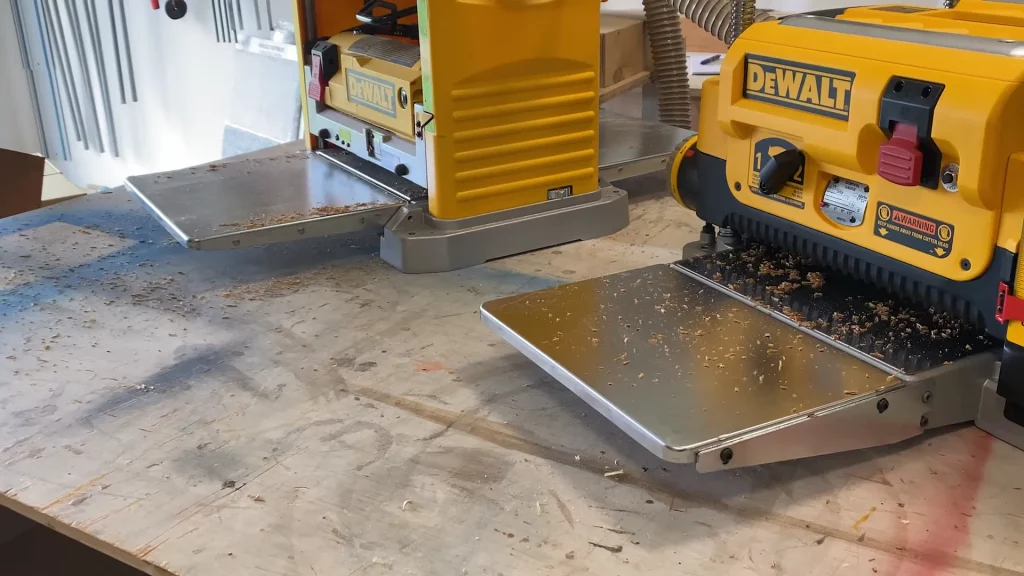
Portable vs Benchtop vs Floor Model Planers
The first decision to make is whether you need a portable, benchtop, or floor model planer:
Portable Planers
Portable planers are the smallest type, typically with planing widths around 12″-13″ and depths around 6″. They are designed to be lightweight and movable, though they sacrifice power and maximum cutting depth compared to larger models.
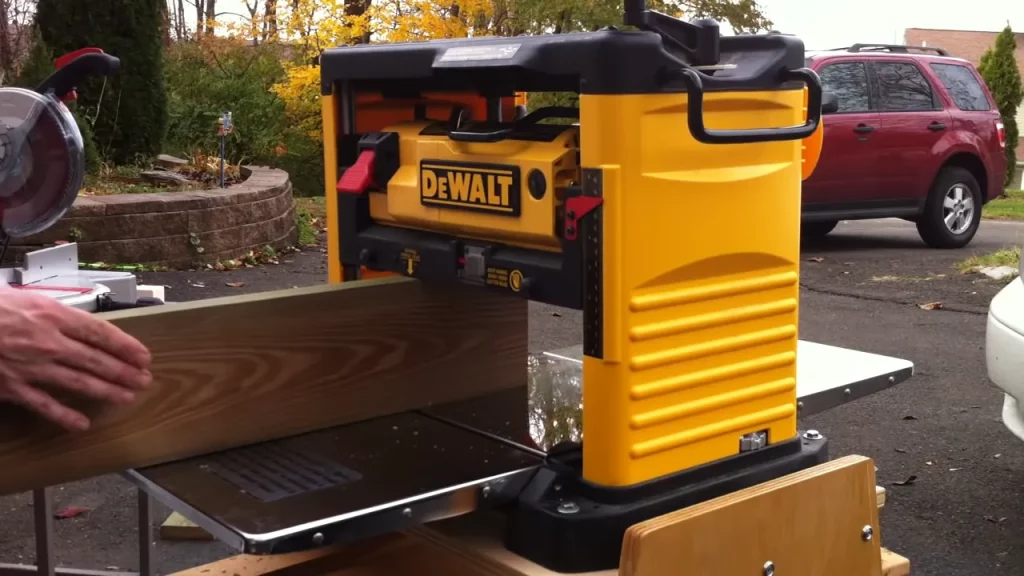
Key Features:
- Compact size and low weight (under 50 lbs)
- Planing width around 12″-13″
- Planing depth around 6″
- Best for small stock and ease of portability
- Lower power than larger planer models
Best Uses:
- Planning smaller boards
- Jobsite and portable uses
- Smoothing and minimal stock removal
- DIYers and woodworkers with limited space
Benchtop Planers
Benchtop planers are a step up in size and power from portable models. They are designed to mount on a workbench. Benchtop planers have planing widths in the 13″-15″ range and depths around 6″.
Key Features:
- Planing width typically 13″-15″
- Planing depth around 6″
- More power than portable models
- Mounts on a workbench
- Typically has a stand or mounts to a workbench
Best Uses:
- Smoothing and surfacing stock
- Medium-sized projects
- DIYers and hobbyist workshops

Floor Model Planers
Floor model planers are the largest type and offer the most cutting width, depth, and power. They have planing widths from 15″ up to 24″ or more and depths of 8″ or more. Floor models have the most power and are mounted on bases with wheels.
Key Features:
- Largest planing width – typically 15″ and up
- Deepest planing depth – 8″ or more
- Most powerful motors
- Mounted on wheeled bases
- Used stationary in workshops
Best Uses:
- Mass stock removal
- Smoothing and surfacing wider stock
- Larger projects with wide boards
- Professional workshops and production work
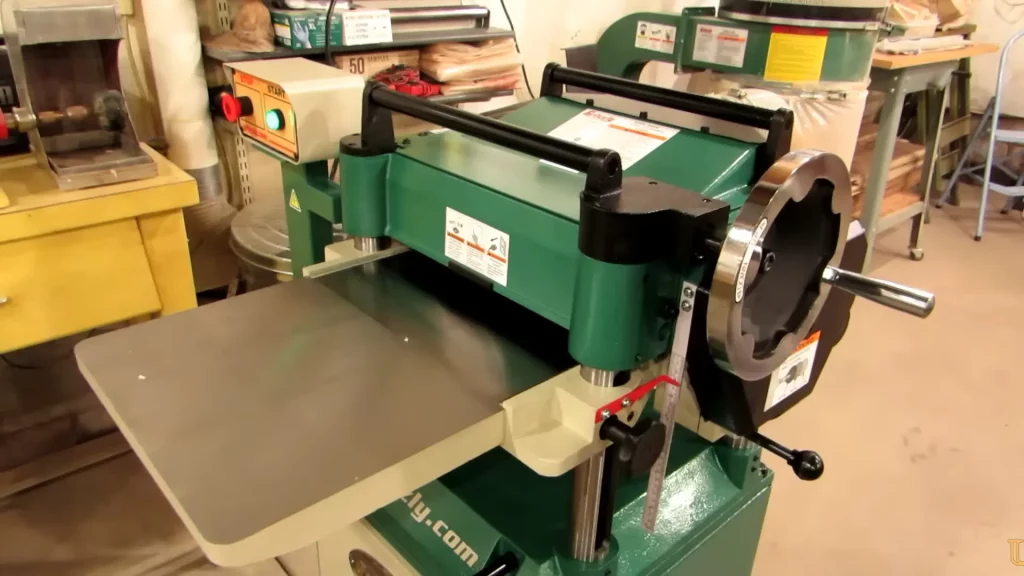
Planing Width
The planing width is one of the most important factors in choosing a planer size. This is the maximum width of stock that the planer can handle.
Common planing widths include:
- Portable planers – around 12″-13″ width
- Benchtop planers – typically 13″-15″ width
- Floor model planers – starting at 15″ and going up to 24″-30″ or more
In general, it’s smart to choose a planer that can handle widths at least 2-3″ wider than your average board. This prevents having to constantly edge joint or rip your stock to fit the planer.
Consider the width of materials you use for typical projects.
For just small projects, a 12″-13″ portable may suffice.
For furniture projects, at least a 15″ planer is likely needed.
And for wide live edge slabs or large tabletops, a floor model 20″+ planer will be required.
Planing Depth
The planing depth determines the maximum thickness of stock that can be fed through the planer. Common depths include:
- Portable planers – around 6″ depth
- Benchtop planers – typically 6″ depth
- Floor model planers – 8″-12″ depth range
If planning large, thick stock is a priority, choose a floor model with at least a 12″ depth capacity. For surfacing typical 1″ thick boards, a 6″ depth is usually sufficient.
Consider your current projects and materials, but also allow room to grow in case you work with thicker stock down the line.
Cutterhead Width
The cutterhead width is an important factor affecting the finish quality, cutting speed, and snipe of your planed boards.
Wider cutterheads allow for faster feed rates, smoother finishes, and less snipe. Snipe is where the leading or trailing edge of the board is planed unevenly due to flexing at the beginning and end of the cut.
General cutterhead widths:
- Portable planers – 1-2″
- Benchtop planers – 2-3″
- Floor models – 3-5″
Look for a planer with the widest cutterhead in your budget. This will maximize the finish quality from your planer.
Feed Speed
The feed speed determines how fast you can feed stock into the planer. Faster feed speeds let you get more work done in the same amount of time.
Typical feed speeds range from:
- Portable planers – 16-26 feet per minute (FPM)
- Benchtop planers – 16-32 FPM
- Floor models – 26-40+ FPM
Faster feed speeds require more power from the motor. In general, wider planers allow for faster feed speeds since they distribute the cutting load across more cutterhead width.
For professional use, look for feed speeds of at least 32 FPM. Slower speeds under 20 FPM can be frustrating for larger projects.
Dust Collection
Handling all the dust from a planer is critical for an efficient and healthy shop. Look for planers with dust ports to connect a vacuum for extracting chips.
Floor model planers often have built-in chip breakers that reduce cutting debris. Many planers also offer enclosed bases to contain dust and chips.
For the best dust collection, look for the following:
- 4″ dust ports for connecting a vacuum
- Built-in chip breaker
- Enclosed base to contain debris
- Disposable dust bag to collect planer chips
Cutterhead Speed
The cutterhead speed is how fast the cutterhead with knives rotates during operation. Faster speeds provide a smoother planing cut. Look for cutterhead speeds of at least 10,000 RPM for a quality cut. Higher speeds of 18,000+ RPM are even better for the smoothest finish.
Slower cutterhead speeds under 10,000 RPM can leave a rougher, more uneven finish.
Motor Power
More powerful motors allow for faster material removal, better handling of hardwoods, and smoother planing with less snipe. Look for planers with at least 3 to 5 amp motors for quality results. The most powerful floor model planers have 15 amp or larger motors.
Underpowered motors slow your feed rate, struggle with denser woods, and reduce cutting quality. Look for the most powerful motor you can get in your budget.
Benchtop planers typically have around 3-5 amp motors, while floor models range from 5 amps for smaller units up to 20+ amps for industrial models.
Table Inserts
Table inserts help support the workpiece on the planer bed before and after the cutterhead. Longer table inserts help reduce snipe since they provide more contact area at the beginning and end of the cut.
Look for infeed and outfeed inserts extending at least 12″ from the cutterhead. The longest inserts on commercial planers are 24″ or more.
Short table inserts under 6″ will result in more snipe on your boards as they lack proper support entering and exiting the cutterhead.
Price
Of course, price and budget plays a key role in choosing the right planer size. Here are typical price ranges for planers of different sizes:
- Portable planers – $200 to $600
- Benchtop planers – $300 to $1,200
- Floor model planers – $800 up to $5,000 or more
The most expensive floor models designed for commercial shops with 20″+ capacity and 10+ HP can cost over $10,000.
For serious hobbyists, expect to spend $600 to $1,500 for a quality benchtop or mid-sized floor model planer. Going with a smaller portable model can save significantly on cost.
Weight and Mobility
The weight and mobility of your planer should match how you intend to use it. Important factors include:
- Portable planers – under 50 lbs for easy moving
- Benchtop planers – Stationary but can be moved for storage
- Floor models – Stationary with wheeled bases – 150 to 400+ lbs
Consider whether you need to move your planer to jobsites or store it frequently. Portable and some benchtop models offer better mobility for limited spaces.
Floor models are best suited for permanent shop setups due to their heavy weight. But wheels make it easy to reposition them within a workshop as needed.
Shop Space Requirements
The amount of space you have available is a limiting factor for planer size. Make sure you have room in your shop for:
- The planer’s footprint while operating
- Infeed and outfeed support tables
- Maneuvering around the planer safely
Ideally allow 5+ feet of clearance around all sides of larger floor model planers. Benchtop models need at least 2 feet of clearance for movement and supports.
Carefully measure the space available in your shop before purchasing a planer to ensure it will fit. Temporary folding infeed/outfeed tables can help reduce the overall footprint.
Your Current and Future Projects
Lastly, consider the types of current and future woodworking projects you want to take on. Fine detailed planing requires a better finish than fast stock removal.
If you mainly work on smaller projects with boards under 6″ wide, a portable or benchtop model may meet your needs. For furniture building, a 15″ floor model will accommodate most tabletops and cabinets. And for wide live edge slabs, a 20″+ industrial planer is likely needed.
Allow room to grow into larger projects with wider stock whenever possible. But you can always edge joint narrower boards to run through a slightly oversized planer when required.
Final Words
Choosing the ideal planer size requires balancing power, width, price, mobility, and shop space. Consider how you intend to use your planer and the types of projects you want to tackle both now and in the future.
Focus first on a planing width at least 2-3″ wider than your average board. Then choose the largest cutterhead, most powerful motor, and longest tables you can afford for superior finish and snipe reduction.
Matching your planer size to your typical work will boost satisfaction and efficiency in your shop. With the right planer, you can smoothly surface boards with ease for all your woodworking projects.

